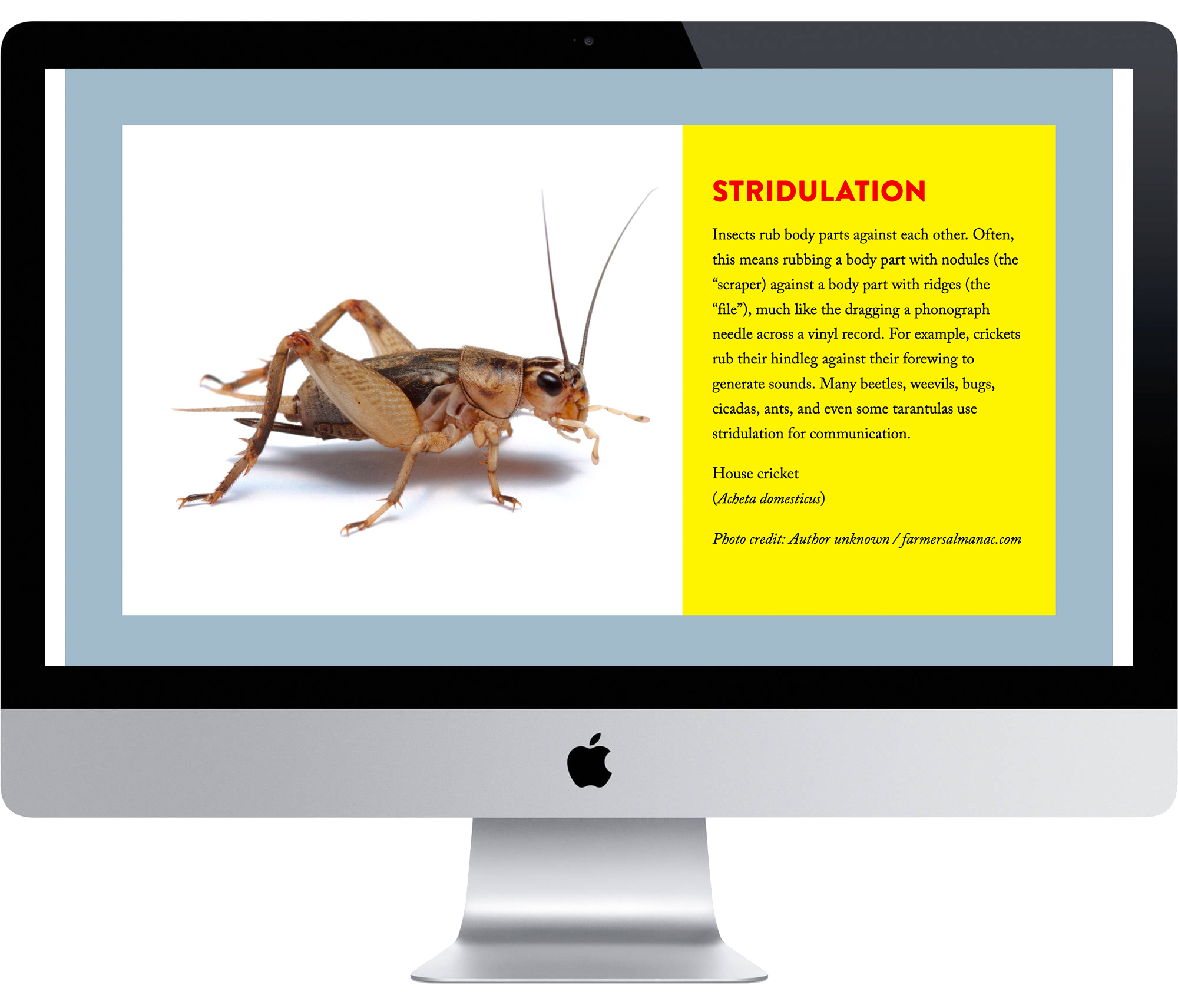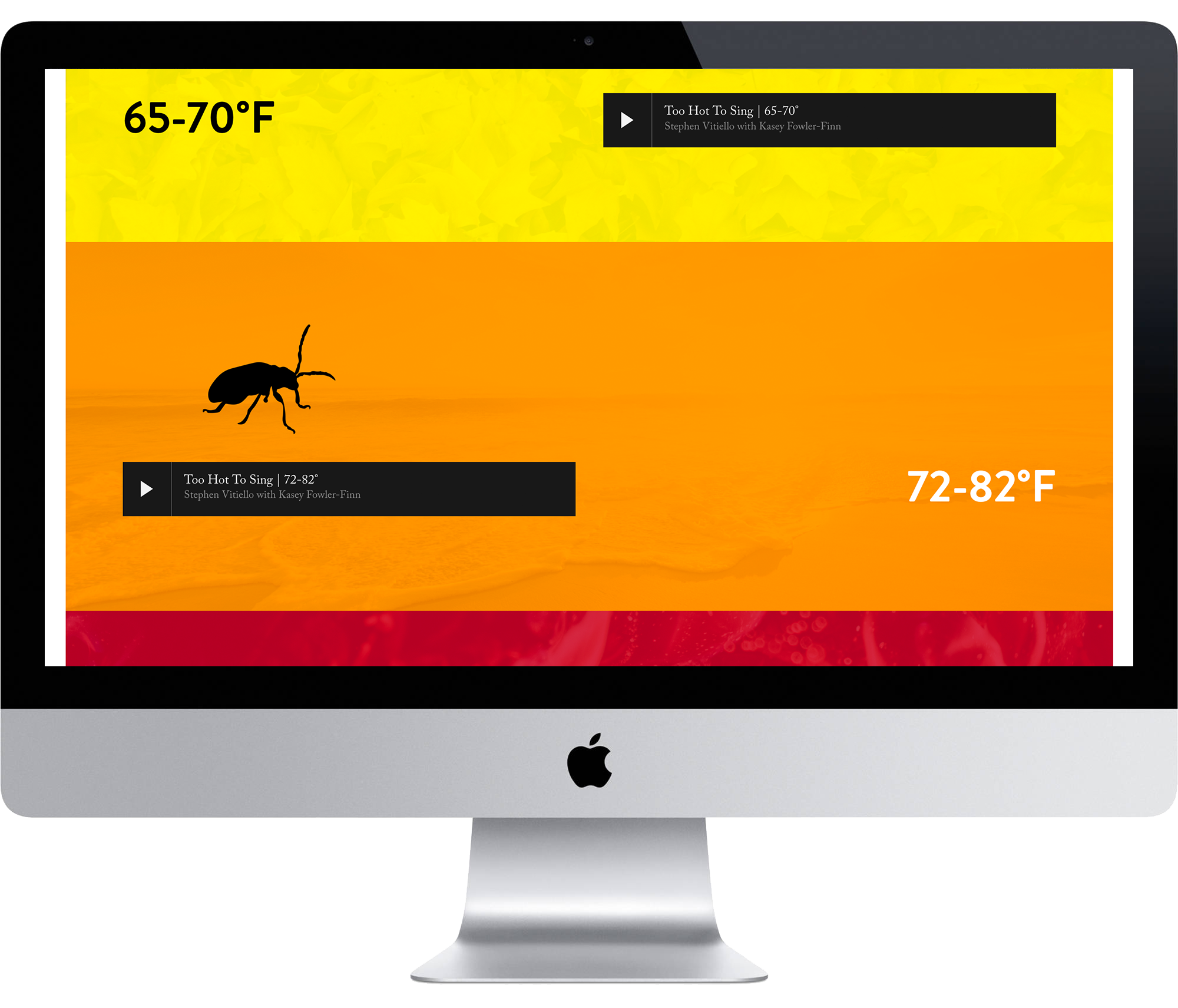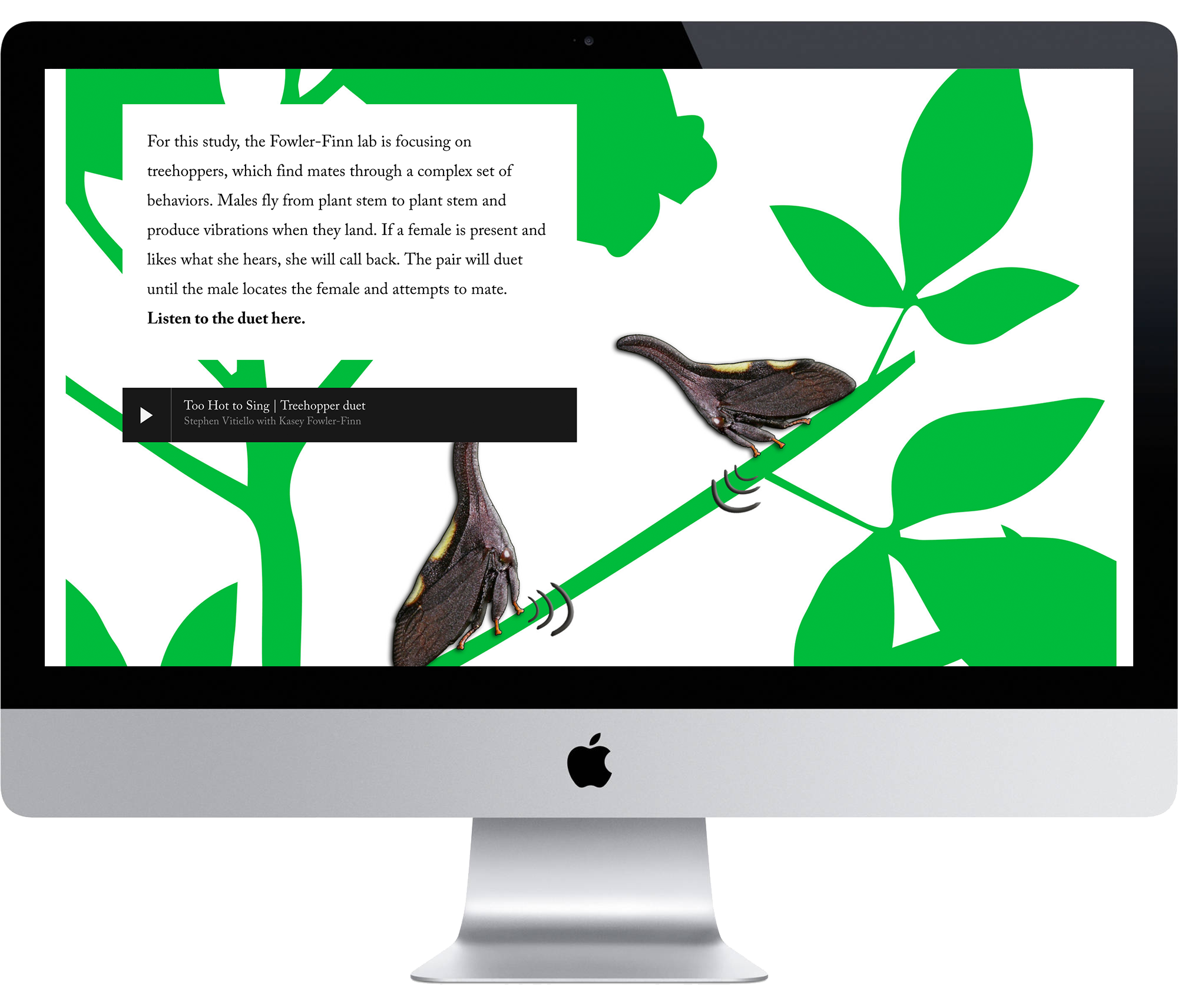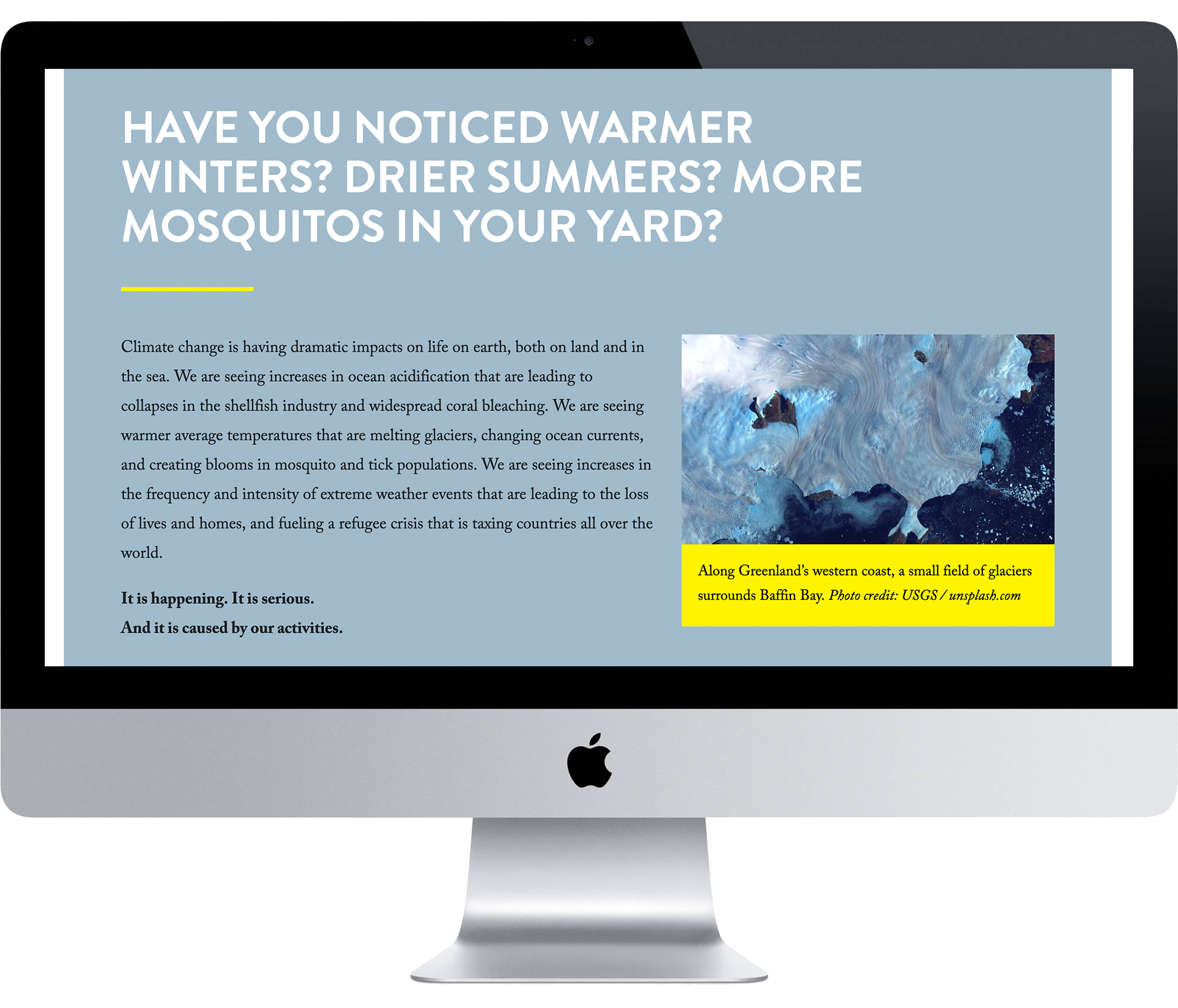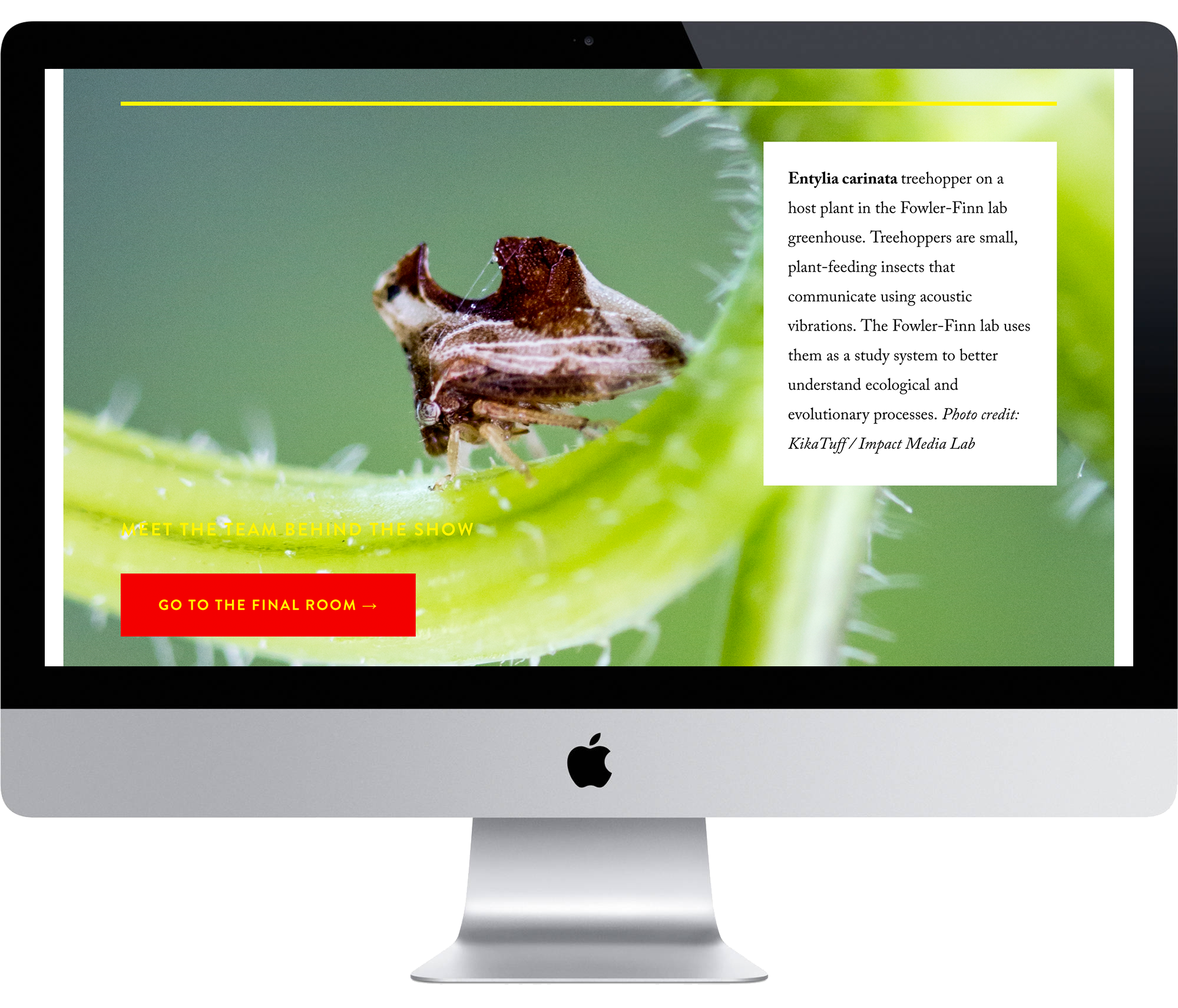Too Hot to Sing | Virtual exhibit
The Project:
About the project:
We were SO excited to install the “Too Hot to Sing” exhibit at the Saint Louis University Art Musuem (SLUMA), but the global pandemic had other plans for this show. When COVID-19 hit, SLUMA closed to visitors for the entire duration of the installation. So we decided to move the exhibit online, and translate the physical experience into an immersive virtual exhibit.
our goal:
Translate scientific information into an emotional experience. In this exhibit, we go beyond explaining the consequences of climate change - we help viewers experience it for themselves. Stephen’s composition immerses listeners in the soundscape of insect conversations. Listeners can experience changes in communication as temperatures rise.
scenes from the show
listen to one of the soundscapes!
about the exhibit
Too Hot to Sing is an exhibit and sound installation based on insect vibrations captured at the Mountain Lake Biological Station in Pembroke, Virginia. Sound artist Stephen Vitiello and Evolutionary Biologist Kasey Fowler-Finn recorded vibrations using surface-based devices like accelerometers, lasers, and record needles. They worked across seasons to capture vibrations in different thermal conditions, ranging from cool (~60°F) to hot (~100°F). Vitiello then layered the vibrations into four compositions, corresponding to the thermal conditions experienced at the time of recording. The end product is an aural experience that helps viewers experience changes in insect communication in the face of global warming.
The virtual exhibit is spread across 8 pages. The first page provides an overview of the show and what to expect. The second page introduces the audience to the world of vibrational signaling, in insects and beyond. The third page focuses on what we know about climate change - its effects on animals and what we can do to slow it down. The fourth page dives deeper into Dr. Fowler-Finn’s research and her findings related to the effects of warming on insect communication. The 5th page features the sound installation, the climax of the exhibit. Pages 6-8 introduce the audience to the insects, the creators, and the funders.





